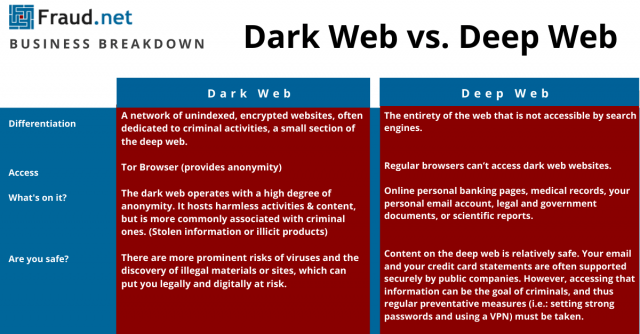The Deep Web, What is it?
The entirety of the web that is not accessible by search engines. Regular browsers, like Google and Bing, search the so-called “surface web”, defined by public links, and the search stops there. The “Deep Web” and “Dark Web” are more in-depth, allow for privacy, and serve different purposes. When discussing them, it is important to remember their distinctions, as there are many.
The “deep” portion of the web is just like it sounds — below the surface and not completely dark. For instance, online banking pages, legal and government documents, or scientific reports have no reason to be indexed. Personal emails and secure information, like bank statements, can also not be searched.
The dark web represents a sliver of the deep web, and while many of its websites are generally harmless, it is often associated with illegal activities, only accessible via the Tor browser, and such sites can lead to serious consequences.
The Dark Web’s Risk to Your Business
A nearly infinite supply of stolen payment cards and identities can be acquired on the dark web. The cost of an identity can range from a few dollars to a few thousand dollars, depending on the detail. Many sellers offer guarantees as to the data’s validity and will provide replacement identities if out of date or inaccurate. Escrow services are available for larger purchases and fraud-as-a-service, using local proxy servers, can further improve the odds of illicit transactions getting past anti-fraud systems.
Monitoring programs can also be customized within certain bounds to address gift card and digital product theft, the sale of credentials and customer data by insiders, and other specific merchant challenges.
Learn More, and Protect Your Business
To learn more, visit the Dark Web Monitoring page on our website, and contact us today to speak with a Fraud Prevention Specialist.


